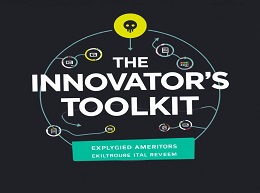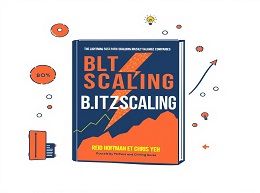The Innovator's Toolkit: 50+ Techniques for Predictable and Sustainable Organic Growth

Exploring "The Innovator's Toolkit": Techniques for Sustainable Growth
"Innovation is the lifeblood of growth," proclaims "The Innovator's Toolkit: 50+ Techniques for Predictable and Sustainable Organic Growth," a comprehensive guide that serves as a practical resource for anyone looking to foster innovation within their organization. Authored by David Silverstein, Philip Samuel, and Neil DeCarlo, this book breaks down complex innovation processes into manageable techniques that can be applied across various industries. This review will delve into the structure, content, and practical applications of the book, providing engaging examples and highlighting key insights.
A Comprehensive Guide
"The Innovator's Toolkit" is structured to be an exhaustive guide, comprising over 50 techniques designed to spur innovation. The book is organized into four main sections, each focusing on different aspects of the innovation process:
1. Defining Opportunities : Techniques for identifying and defining innovation opportunities.
2. Discovering Ideas : Methods for generating and capturing innovative ideas.
3. Developing Designs : Strategies for developing and refining ideas into viable designs.
4. Demonstrating Value : Approaches to validate and demonstrate the value of innovations.
Each section is filled with practical tools and techniques, making the book both a theoretical and practical manual for innovation.
User-Friendly Format
The book's format is user-friendly, with each technique presented in a standardized format that includes:
- Purpose : A brief explanation of the technique’s purpose.
- When to Use : Situations or stages in the innovation process where the technique is most effective.
- How to Use : Step-by-step instructions for implementing the technique.
- Example : Real-world applications or hypothetical scenarios illustrating the technique.
This consistent format makes it easy for readers to quickly understand and apply each technique.
Identifying Innovation Opportunities
The first section of the book focuses on identifying opportunities for innovation. This is a crucial step as it sets the stage for the entire innovation process.
Example: SWOT Analysis
One of the techniques highlighted is SWOT Analysis (Strengths, Weaknesses, Opportunities, Threats). This method helps organizations assess their internal strengths and weaknesses and external opportunities and threats, providing a clear picture of where innovation is needed and can be most effective.
Case Study: A Tech Startup
A tech startup used SWOT Analysis to identify that while they had strong technical expertise (Strength), they lacked marketing prowess (Weakness). They saw an opportunity in the emerging market for AI-driven marketing tools (Opportunity) and noted that larger competitors were not yet focusing on this niche (Threat). This analysis guided their innovation strategy towards developing a unique AI marketing tool, setting the foundation for their growth.
Generating Innovative Ideas
The second section of the book delves into techniques for generating innovative ideas. This is where creativity and brainstorming come into play.
Example: Brainstorming
Brainstorming is a classic technique for idea generation. "The Innovator's Toolkit" provides structured approaches to enhance traditional brainstorming sessions, ensuring they are productive and yield actionable ideas.
Case Study: A Manufacturing Company
A manufacturing company facing declining sales used structured brainstorming sessions to generate ideas for new product features. By encouraging participation from employees across different departments and using techniques like mind mapping and the "6-3-5" method (six participants, three ideas each, five minutes), they were able to generate a wide array of ideas, including cost-saving manufacturing processes and new product designs that revitalized their product line.
Refining and Developing Ideas
The third section is dedicated to developing and refining ideas into viable designs. This involves detailed planning and iterative testing to ensure the ideas are feasible and effective.
Example: Prototyping
Prototyping is a key technique in this section. The book outlines various methods for creating prototypes, from low-fidelity sketches and models to high-fidelity, functional prototypes.
Case Study: A Consumer Electronics Company
A consumer electronics company used rapid prototyping to develop a new smart home device. By quickly creating and testing low-fidelity prototypes, they were able to gather user feedback early in the development process. This iterative approach allowed them to refine the design based on real user needs and preferences, resulting in a successful product launch.
Validating Innovations
The final section of the book focuses on validating and demonstrating the value of innovations. This is where the rubber meets the road, and ideas are tested in real-world scenarios to ensure they deliver the intended benefits.
Example: Pilot Testing
Pilot testing involves deploying a new product or process on a small scale to assess its performance before a full-scale launch. "The Innovator's Toolkit" provides detailed guidance on how to plan and conduct effective pilot tests.
Case Study: A Healthcare Provider
A healthcare provider developed a new patient management system designed to improve efficiency and patient satisfaction. Before rolling it out across all their clinics, they conducted a pilot test in one location. The pilot revealed several usability issues and provided insights into how the system could be improved. By addressing these issues before the full launch, the provider ensured a smoother implementation and better user acceptance.
For Entrepreneurs and Startups
Entrepreneurs and startups can benefit greatly from the techniques outlined in "The Innovator's Toolkit." The book provides practical tools for every stage of the innovation process, from identifying opportunities to validating solutions.
Example: Lean Startup Methodology
Many of the techniques align well with the Lean Startup methodology, which emphasizes rapid experimentation and customer feedback. Techniques like Minimum Viable Product (MVP) development and iterative testing can help startups quickly validate their ideas and pivot as needed.
For Established Companies
Established companies looking to foster a culture of innovation can also apply the techniques in this book. The structured approach to innovation ensures that new ideas are not only generated but also thoroughly evaluated and refined.
Example: Continuous Improvement
The principles of continuous improvement, such as Kaizen, are reflected in many of the techniques. By continuously seeking small improvements and validating them through structured processes, companies can maintain a steady flow of innovation that drives sustainable growth.
A Must-Have Resource
"The Innovator's Toolkit: 50+ Techniques for Predictable and Sustainable Organic Growth" is an invaluable resource for anyone involved in the innovation process. Its comprehensive coverage of techniques, practical examples, and user-friendly format make it a must-have for entrepreneurs, managers, and innovation professionals.












